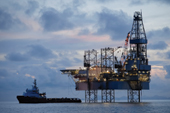Is It Time to Rethink Your Manufacturing Strategy?
Factors such as oil price volatility, increasing labor costs in emerging markets and shifts in demand all come into play when deciding where to manufacture products.

One crucial enabling factor for outsourcing or offshoring manufacturing was cheap oil. But now, crude oil prices and transportation costs have risen.
For the past 10 years, China was the answer to many manufacturing questions. That’s no longer automatically the case.
Supply chain disruptions, fuel price volatility, rising labor costs, advances in technology and a growing realization of the advantages of being physically close to customers are leading some manufacturers to conclude that they are better off with a regional strategy that may or may not include China.
This doesn’t mean that the United States or Western Europe will ever again be the manufacturing hubs they once were. For a company doing business in the United States or Western Europe, for example, a regional strategy is likely to mean Mexico or Eastern Europe. And it may not mean a lot for jobs, since technological advances and productivity growth keep reducing the need for labor in manufacturing. However, it does suggest that smart companies are likely to conclude that the optimal manufacturing strategy depends on working out a subtle equation that includes the materials that go into the product, the product itself and the expected growth of the customer base. This equation must be monitored continually so that manufacturing and logistics solutions can be dynamic and flexible to meet the ongoing changes in the market.
Since the mid-1990s, many companies have outsourced or offshored some or all of their manufacturing operations. For most, one crucial enabling factor was cheap oil: Long supply lines were economically feasible because transportation costs were relatively low. Hence, companies emphasized reducing manufacturing costs through (1) offshoring or outsourcing; (2) plant rationalization (leveraging production economies of scale and reducing capital investment); and (3) consolidating distribution centers and warehouses to reduce inventory levels and minimize fixed facility costs.
Now the equation has changed. Crude oil prices and transportation costs have risen, making them far more significant relative to inventory, production and fixed facility costs. This in turn has given rise to three new cost-optimization realities:
1. Regional distribution centers become more attractive. As oil prices increase, outbound transportation becomes more expensive. As a consequence, it may be necessary to minimize distances between distribution centers and retail outlets by adding warehouses.

Comments (2)
Rabindranath Bhattacharya
Rabindranath Bhattacharya